
How to Use Olimex ESP32-EVB: Examples, Pinouts, and Specs
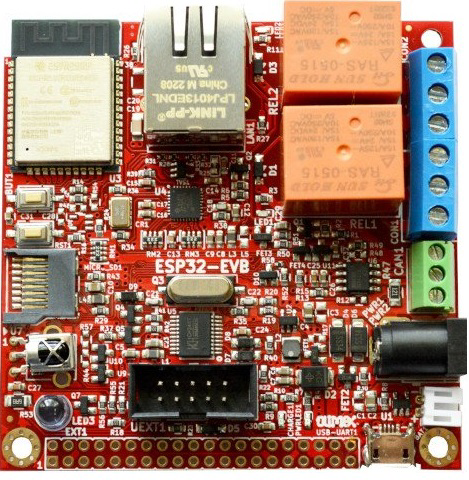
 Design with Olimex ESP32-EVB in Cirkit Designer
Design with Olimex ESP32-EVB in Cirkit DesignerIntroduction
The Olimex ESP32-EVB is a versatile development board that harnesses the power of the ESP32 microcontroller. This board is designed for a wide range of applications, from IoT devices to complex networking projects, thanks to its built-in Wi-Fi and Bluetooth capabilities. It is an excellent choice for both hobbyists and professionals looking to develop prototypes or final products with wireless connectivity and a multitude of GPIO options.
Explore Projects Built with Olimex ESP32-EVB
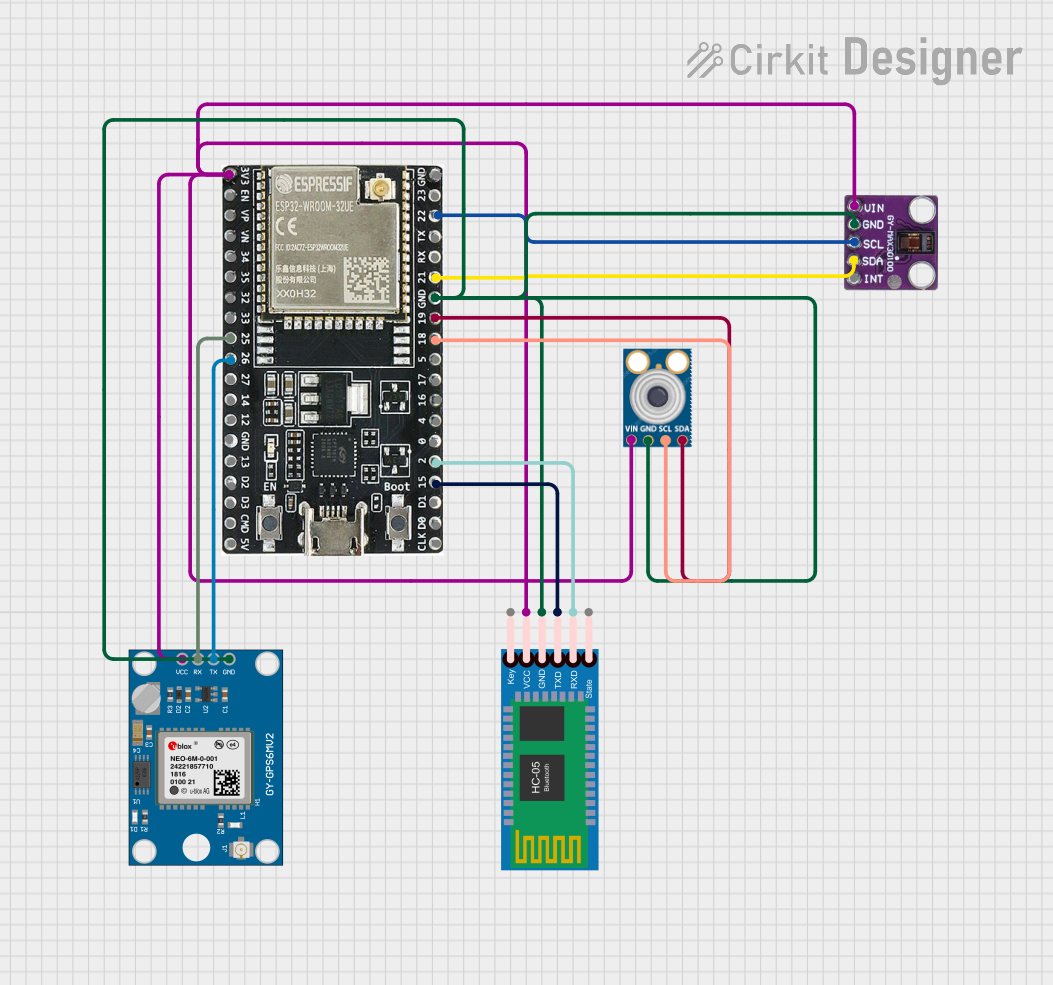
 Open Project in Cirkit Designer
Open Project in Cirkit Designer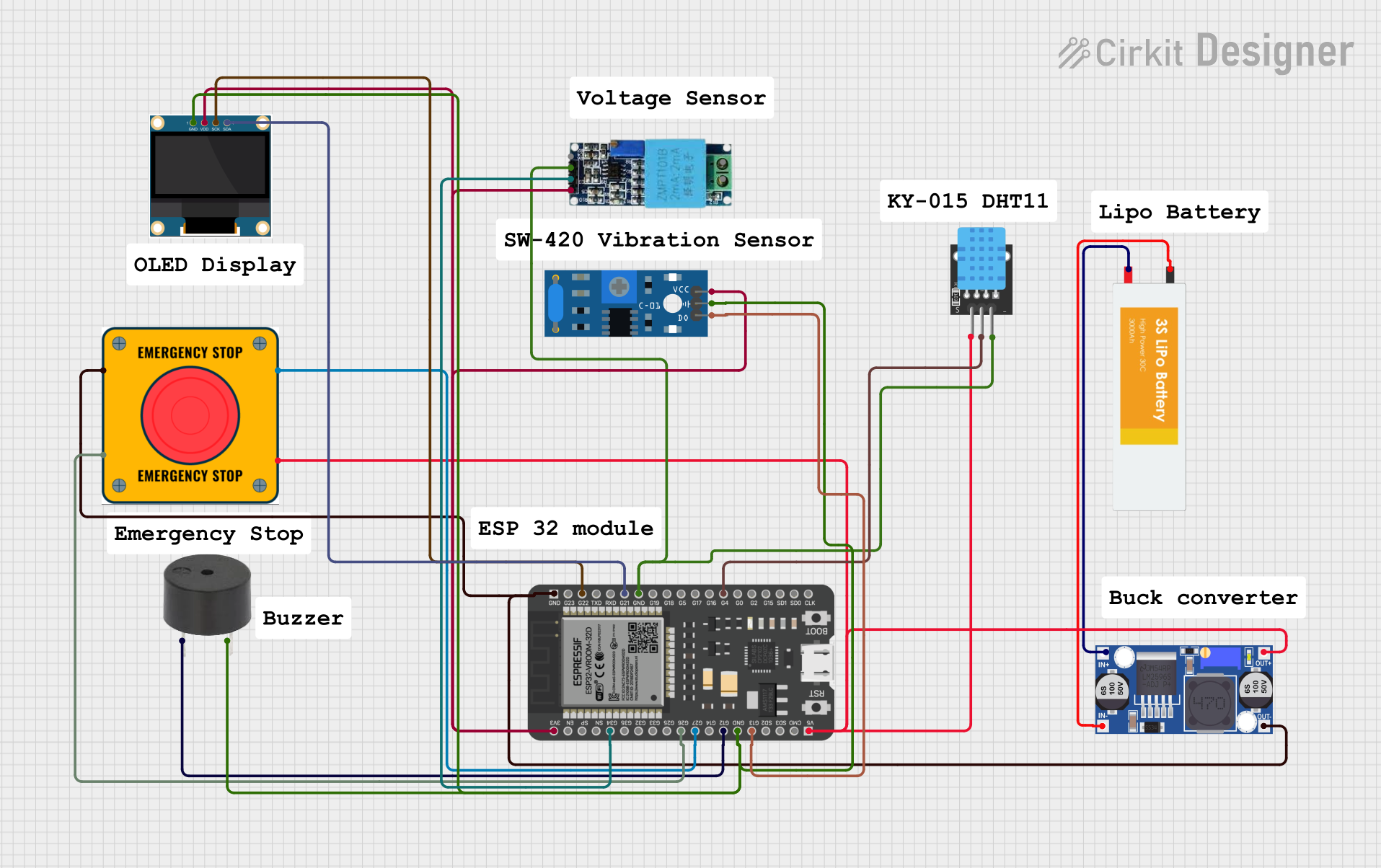
 Open Project in Cirkit Designer
Open Project in Cirkit Designer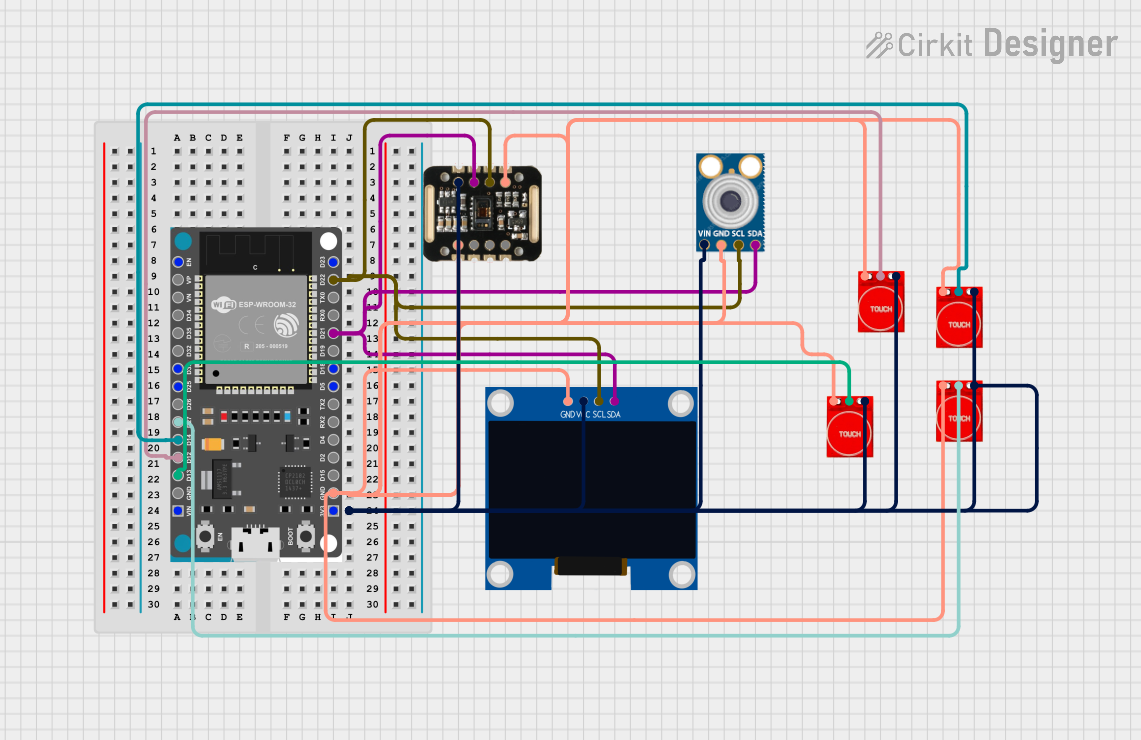
 Open Project in Cirkit Designer
Open Project in Cirkit Designer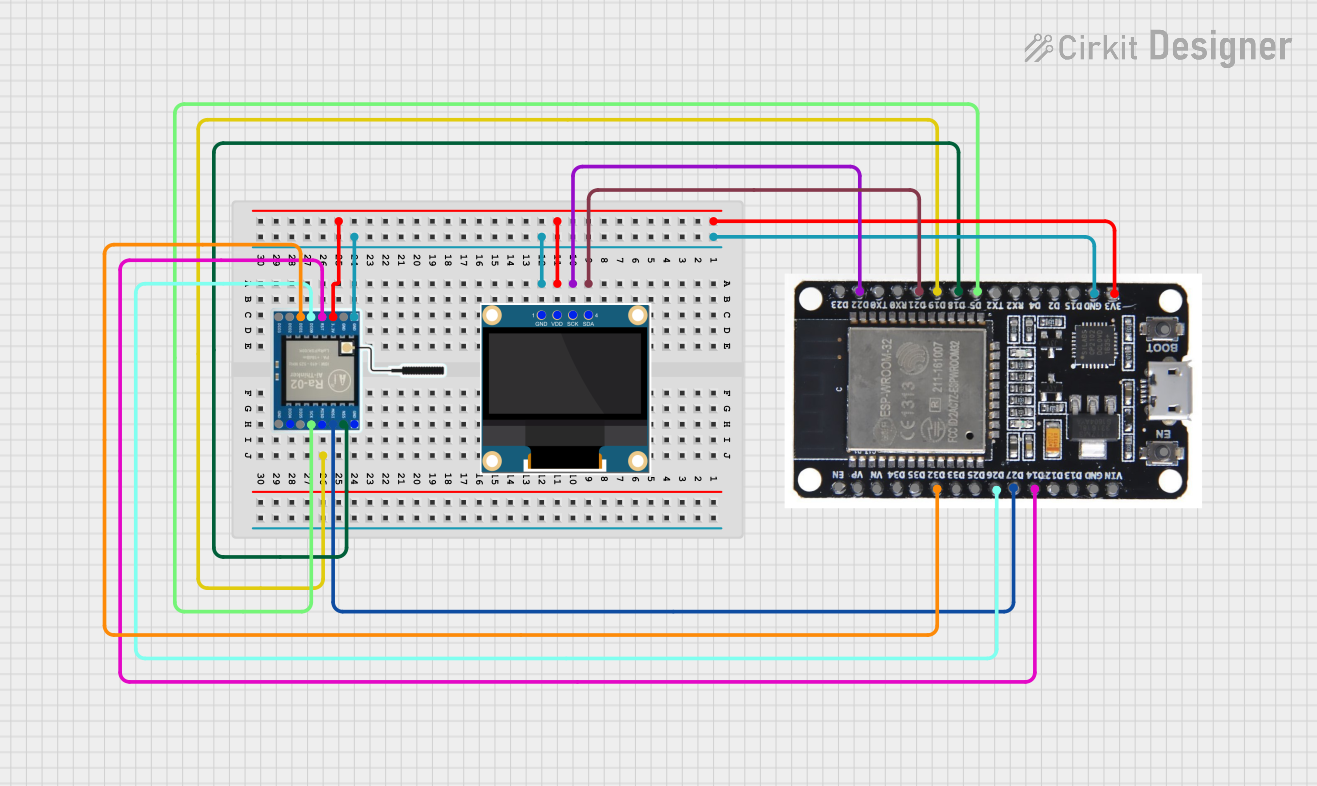
 Open Project in Cirkit Designer
Open Project in Cirkit DesignerExplore Projects Built with Olimex ESP32-EVB

 Open Project in Cirkit Designer
Open Project in Cirkit Designer
 Open Project in Cirkit Designer
Open Project in Cirkit Designer
 Open Project in Cirkit Designer
Open Project in Cirkit Designer
 Open Project in Cirkit Designer
Open Project in Cirkit DesignerCommon Applications and Use Cases
- Internet of Things (IoT) devices
- Home automation systems
- Wireless sensor networks
- Bluetooth-enabled products
- Rapid prototyping for embedded systems
Technical Specifications
Key Technical Details
- Microcontroller: ESP32
- Operating Voltage: 3.3V
- Input Voltage: 5V via micro USB or PoE
- Digital I/O Pins: 40
- Analog Input Pins: 12 (VP, VN, 32, 33, 34, 35, 36, 39)
- Analog Output Pins: 2 (DAC1, DAC2)
- Flash Memory: 4MB
- SRAM: 520 KB
- Clock Speed: 240 MHz
- Wi-Fi: 802.11 b/g/n
- Bluetooth: v4.2 BR/EDR and BLE
- Ethernet: 100Mb interface with PoE capability
Pin Configuration and Descriptions
| Pin Number | Function | Description |
|---|---|---|
| 1-40 | GPIO | General Purpose Input/Output pins |
| 41-52 | Power, Reset | Power supply, Ground, and Reset pins |
| 53-60 | Communication | UART, SPI, I2C, and CAN interface pins |
| 61-64 | Analog Inputs | Analog-to-Digital Converter (ADC) pins |
| 65-66 | Analog Outputs | Digital-to-Analog Converter (DAC) pins |
| 67-68 | Ethernet | Ethernet TX and RX pins |
| 69 | Micro SD Card | Micro SD card interface |
| 70-73 | USB | USB interface and programming pins |
Usage Instructions
How to Use the Component in a Circuit
Powering the Board:
- Connect a 5V power supply to the micro USB port or use the PoE feature if available.
Programming the Board:
- Install the necessary drivers and the Arduino IDE or ESP-IDF.
- Select the correct board and port in your development environment.
- Use a micro USB cable to connect the board to your computer for programming.
Interfacing with External Components:
- Use the GPIO pins to connect sensors, actuators, or other peripherals.
- Ensure that the voltage levels are compatible with the board's 3.3V logic.
Wireless Connectivity:
- Utilize the Wi-Fi and Bluetooth functionalities by including the appropriate libraries in your code.
Important Considerations and Best Practices
- Always ensure that the power supply is within the specified range to prevent damage.
- When interfacing with 5V components, use level shifters to avoid damaging the 3.3V logic pins.
- Use decoupling capacitors close to the power pins to minimize noise and voltage spikes.
- Avoid drawing more than 12 mA from any GPIO pin.
- For Wi-Fi and Bluetooth applications, ensure that the antenna area is not obstructed to maintain signal integrity.
Troubleshooting and FAQs
Common Issues
Board Not Recognized by Computer:
- Check the USB cable and port.
- Ensure that the correct drivers are installed.
Wi-Fi or Bluetooth Not Working:
- Verify that the antenna is not obstructed.
- Check your code for proper initialization of wireless functionalities.
GPIO Pin Not Functioning:
- Ensure that the pin is not being used by another peripheral (e.g., SD card or USB).
- Check for soldering issues or shorts on the board.
Solutions and Tips for Troubleshooting
- Always start with a simple blink program to ensure the board is functioning correctly.
- Use serial output to debug and track down issues in your code.
- Consult the Olimex ESP32-EVB forums and community for help with specific problems.
FAQs
Q: Can I power the board through the GPIO pins?
- A: It is not recommended to power the board through GPIO pins. Use the designated power input methods.
Q: How do I enable PoE on the board?
- A: To enable PoE, you need a PoE-compliant router or injector and ensure that the board's PoE option is configured correctly.
Q: What is the maximum range of the Wi-Fi and Bluetooth signals?
- A: The range depends on environmental factors, but typically Wi-Fi can reach up to 50 meters indoors, and Bluetooth has a range of about 10 meters.
Example Code for Arduino UNO
// Basic Wi-Fi connection example for the Olimex ESP32-EVB
#include <WiFi.h>
// Replace with your network credentials
const char* ssid = "your_SSID";
const char* password = "your_PASSWORD";
void setup() {
Serial.begin(115200);
// Connect to Wi-Fi
WiFi.begin(ssid, password);
while (WiFi.status() != WL_CONNECTED) {
delay(500);
Serial.println("Connecting to WiFi...");
}
Serial.println("Connected to WiFi");
}
void loop() {
// Put your main code here, to run repeatedly:
}
Remember to replace your_SSID and your_PASSWORD with your actual Wi-Fi network credentials. This code will connect your Olimex ESP32-EVB to your Wi-Fi network and print a confirmation message to the serial monitor.